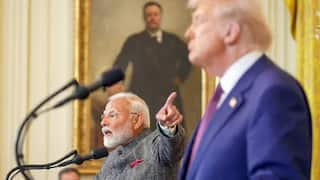Google Doodle Today: Google Celebrates Birth Anniversary Of Biophysicist Mária Telkes. All About Her
Google Doodle Today: Hungarian-American biophysicist Mária Telkes is best known for her invention of the solar distiller and the first solar-powered heating system designed for residences.

Google Doodle Today: The Google Doodle of Monday, December 12 is dedicated to Hungarian-American physical chemist and biophysicist Mária Telkes. She is best known for her invention of the solar distiller and the first solar-powered heating system designed for residences.
Mária Telkes’ education
According to Britannica, Telkes also invented other devices capable of storing energy captured from sunlight. Raised in Budapest, Telkes studied physical chemistry at the University of Budapest. She graduated with a BA in 1920 and a PhD in 1924. The same year, she became an instructor at the University of Budapest, but decided to immigrate to the United States after visiting a relative. At that time, the relative served as the Hungarian consul in Cleveland.
Telkes created a photoelectric device to record brain waves
Telkes accepted a position as a biophysicist for the Cleveland Clinic Foundation in 1925. There, she worked with American surgeon George Washington Crile to create a photoelectric device that recorded brain waves.
Telkes developed instruments converting heat into electrical energy
In 1937, Telkes became an American citizen, and the same year, she became a research engineer at Westinghouse Electric. There, she developed instruments that converted heat into electrical energy.
Telkes worked on thermoelectric devices powered by sunlight
In 1939, Telkes made her first forays into solar energy research. The same year, she joined the Solar Energy Conservation Project at the Massachusetts Institute of Technology (MIT), and worked on thermoelectric devices powered by sunlight.
Telkes invented a solar distiller in World War II
During World War II, Telkes was assigned to the US Office of Scientific Research and Development. There, she created one of her most important inventions. She invented a solar distiller capable of vaporising seawater and recondensing it into drinkable water.
The system was carried aboard life rafts during World War II, and was also scaled up to supplement the water demands of the Virgin Islands. After the war, she remained at MIT. In 1945, she became an associate research professor in metallurgy at MIT.
Telkes continued to develop solar-energy applications until the end of her career. She even received several patents for her work.
Telkes designed world’s first solar energy-heated modern residence
Telkes designed and constructed the world's first modern residence hearted with solar energy, together with American architect Eleanor Raymond.
How was the residence heated with solar energy?
The house, built in Dover, Massachusetts in 1948, had boxlike solar collectors that captured sunlight and warmed the air in a component between a double layer of glass and a black sheet of metal. Then, warmed air was piped into the walls, following which it was transferred to Glauber's salts for storage and later use. Glauber's salt refers to crystallised sodium sulphate.
Telkes created solar stoves, ovens and heaters
Telkes created solar stoves and solar heaters by improving upon existing heat-exchanger technology. In 1953, she received a $45,000 grant from the Ford Foundation to create a universal solar oven that could be adapted for use by people living at all latitudes.
Telkes helped develop world’s first solar-electric residence
Telkes also worked to develop materials capable of enduring the temperature extremes of space, according to Britannica. She assisted the US Department of Energy in the development of the world's first solar-electric residence, in 1980. The residence was built in Carlisle, Massachusetts.
Telkes’ accolades
Telkes became the first recipient of the Society of Women Engineers Achievement Award in 1952. She received a lifetime achievement award from the National Academy of Sciences Building Research Advisory Board in 1977, for her contributions to solar-heated building technology. The same year, the American Solar Energy Society conferred her with the Charles Greeley Abbot Award.





































